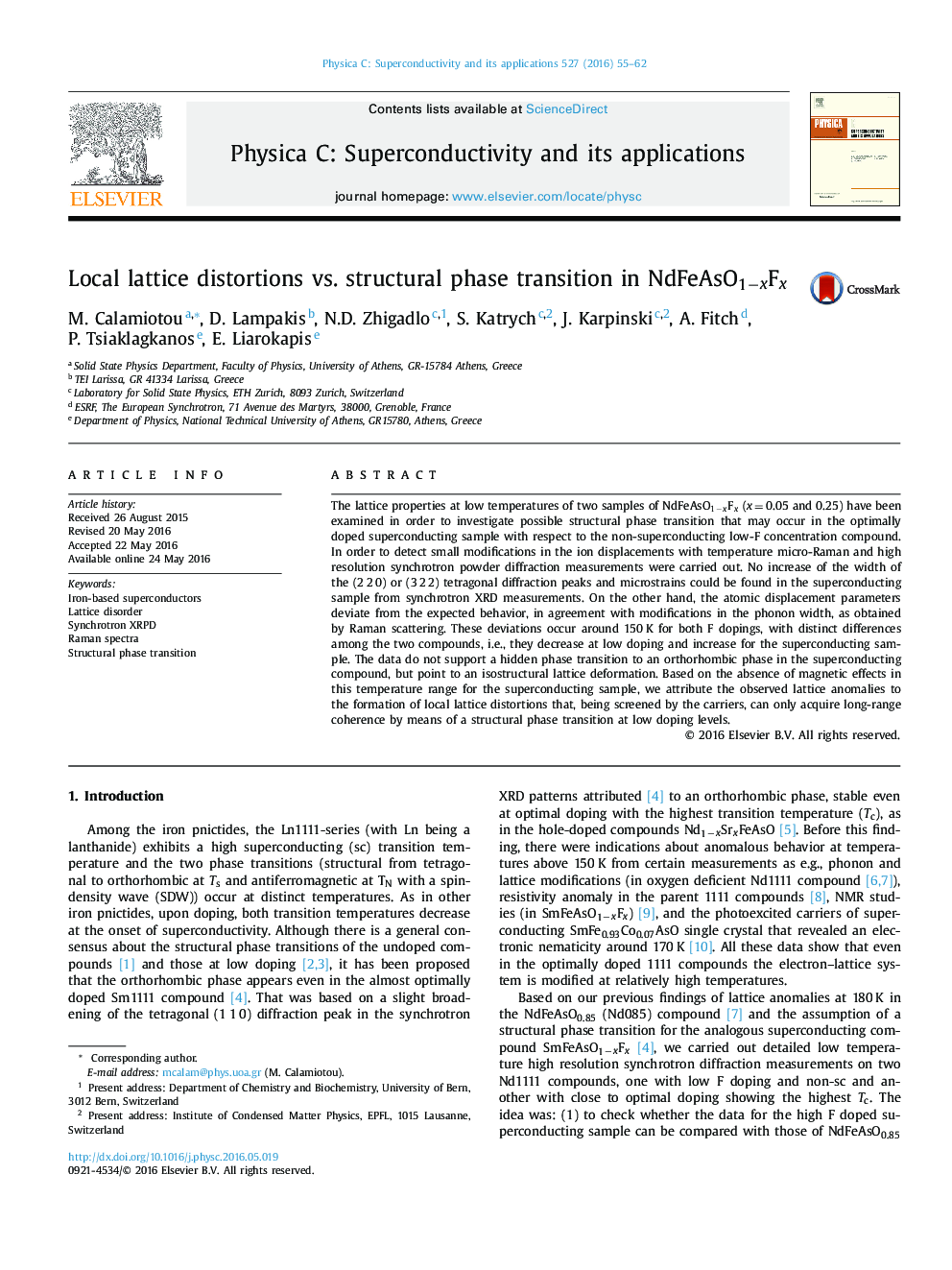| Article ID | Journal | Published Year | Pages | File Type |
|---|---|---|---|---|
| 1817357 | Physica C: Superconductivity and its Applications | 2016 | 8 Pages |
•We studied two concentrations, representatives of the superconducting and the non-superconducting regions of the phase diagram of NdFeAsO1−xFx system, by combining high resolution high statistics synchrotron diffraction with micro-Raman data as a function of temperature.•The evolution of the atomic displacement parameters, which agree with modifications in the phonon spectra, point to an isostructural disorded phase in the superconducting sample, in contrast to a tetragonal to orthorhombic long range phase transition that occurs at low doping.•Based on the absence of magnetic effects in this temperature range for the superconducting sample, we attribute the observed lattice anomalies to the formation of local lattice distortions that, being screened by the carriers, can only acquire long-range coherence by means of a structural phase transition at low doping levels.
The lattice properties at low temperatures of two samples of NdFeAsO1−xFx (x = 0.05 and 0.25) have been examined in order to investigate possible structural phase transition that may occur in the optimally doped superconducting sample with respect to the non-superconducting low-F concentration compound. In order to detect small modifications in the ion displacements with temperature micro-Raman and high resolution synchrotron powder diffraction measurements were carried out. No increase of the width of the (2 2 0) or (3 2 2) tetragonal diffraction peaks and microstrains could be found in the superconducting sample from synchrotron XRD measurements. On the other hand, the atomic displacement parameters deviate from the expected behavior, in agreement with modifications in the phonon width, as obtained by Raman scattering. These deviations occur around 150 K for both F dopings, with distinct differences among the two compounds, i.e., they decrease at low doping and increase for the superconducting sample. The data do not support a hidden phase transition to an orthorhombic phase in the superconducting compound, but point to an isostructural lattice deformation. Based on the absence of magnetic effects in this temperature range for the superconducting sample, we attribute the observed lattice anomalies to the formation of local lattice distortions that, being screened by the carriers, can only acquire long-range coherence by means of a structural phase transition at low doping levels.
